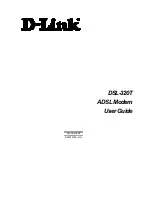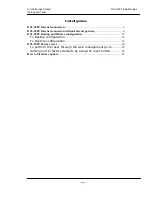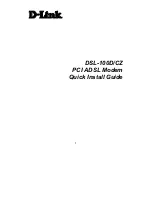
43
Connecting the Cable Modem
1.
Connect one end of the coaxial cable to the cable connection in the wall, and
the other end to the connector on the modem labeled CABLE.
2.
a. Insert the plug from the AC power supply into the power AC jack labeled
“
9VDC 800mA
”
on the cable modem.
b. Insert the power cord into the AC adapter, and then plug into an AC
outlet.
3.
For USB Connection:
Connect one end of the USB cable to the USB port on
the back of your computer, and the other end to the USB port on the cable
modem
’
s back panel.
(See page 9 for instructions on loading the USB
driver.)
OR
For Ethernet Connection:
Connect one end of the Ethernet cable (straight-
wired, see above) to the Ethernet port on the back of your computer, and the
other end to the ETHERNET jack on the modem
’
s back panel.
Detach Her
e
✂
Minimum System Requirements
Quick Reference
IBM PC COMPATIBLE
MACINTOSH
CPU
Pentium preferred
PowerPC or higher
System RAM
16MB (32MB preferred)
24MB (32MB preferred)
Operating System
Windows 98SE/2000/Me Linux
Mac OS 7.6.1 or higher
Available Disk Space
125MB
50MB
Sound Card
Required
N/A
†
Video
VGA or better (SVGA preferred)
VGA or better (SVGA built-in preferred)
CD-ROM Drive
Required
Required
Ethernet
10BaseT or 100BaseT
10BaseT or 100BaseT
USB Port
USB (Windows 98SE/2000/Me only)
N/A
†
The Universal Serial Bus is a high speed bus that enables your computer to communicate
simultaneously with a variety of peripherals. If you have other peripherals that send and
receive a lot of information, such as speakers, printers or scanners, we recommend using
an Ethernet card to support this modem.
†
Mac Users: Neither Mac OS nor any other OS other than Windows 98SE, Me or 2000 are not
supported currently for USB installation. Please use the Ethernet connection.




































